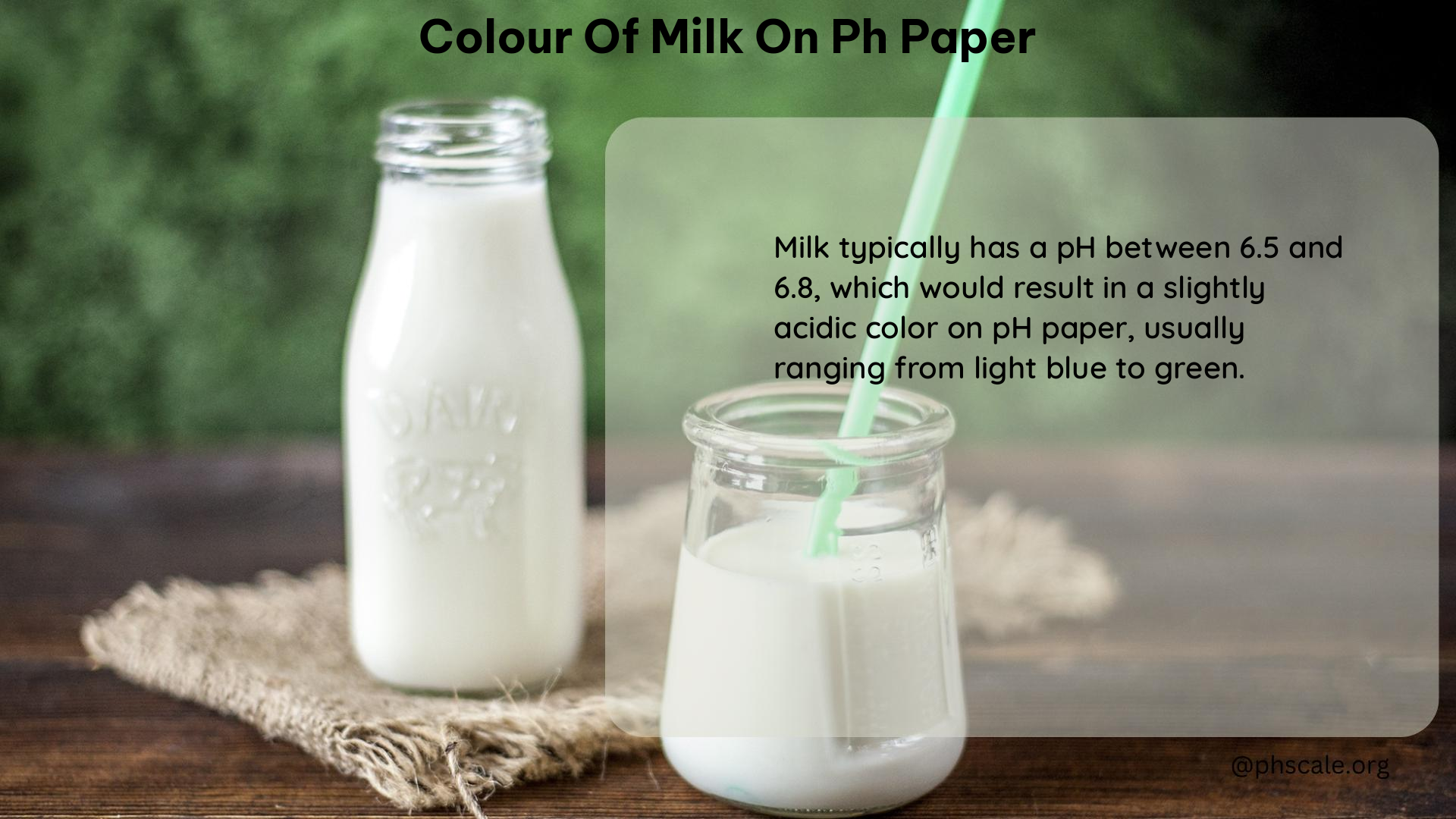The colour of milk on pH paper is typically light green, indicating its slightly acidic nature. This is due to the presence of lactic acid, a byproduct of the bacterial fermentation of lactose in milk. Understanding the pH level of milk is crucial for maintaining its quality and ensuring its safety for consumption.
pH Level of Milk
Milk has a pH level of around 6.7, which is slightly acidic. This pH range is essential for the proper functioning of the digestive system and the absorption of essential nutrients. The pH level of milk can vary slightly depending on factors such as the breed of the cow, the stage of lactation, and the processing methods used.
pH Paper Test

The pH paper test is a simple and cost-effective method to determine the pH level of milk. The pH paper is coated with special indicator dyes that change colour depending on the acidity or alkalinity of the sample. When the pH paper is dipped in milk, it will turn light green, indicating a pH level of around 6.7.
| pH Level | Colour Change |
|---|---|
| 1-3 | Red |
| 4-6 | Orange |
| 6.7 | Light Green |
| 8-10 | Blue |
| 11-14 | Purple |
Universal Indicators
Universal indicators are a mixture of different compounds that exhibit smooth colour variations over a pH range of 1 to 14. These indicators are used to determine the acidity or alkalinity of solutions, including milk. When a universal indicator is added to milk, it will turn green, indicating that the milk is neutral in nature.
Contaminants and Chemicals
Milk can contain various contaminants and chemicals, such as lactic acid, calcium, vitamins, minerals, and proteins. These components can affect the pH level of milk and influence the colour change observed on pH paper.
Balancing pH Level
To maintain the optimal pH level of milk, it is essential to follow proper hygiene and handling practices during milk production and storage. This includes:
- Proper cleaning and sanitizing of equipment and surfaces to prevent bacterial contamination.
- Cooling and storing milk at a temperature below 4°C (39°F) to slow down bacterial growth.
- Regular testing of milk for pH levels and bacterial contamination to ensure quality and safety.
History
The pH paper test has been used for many years to determine the pH level of milk. The concept of pH was first introduced by Søren Sørensen in 1909, and since then, various methods have been developed to measure pH levels, including the use of pH paper and universal indicators.
Helpful pH Quantity to Consume
Consuming milk with a pH level around 6.7 can be beneficial for health. Milk is a rich source of nutrients, including calcium, vitamins, and proteins, which are essential for maintaining strong bones and overall health.
Alternatives
Some alternatives to traditional milk include almond milk, soy milk, and coconut milk, all of which have a pH level around 6.5.
References
- pH Paper Test of Milk | Acids and Bases Lab – YouTube. (2023, March 23). Retrieved from https://www.youtube.com/shorts/jM5ELcZ8A2g
- What is the colour change of a universal indicator when mixed with …. (2024, June 18). Retrieved from https://www.vedantu.com/question-answer/colour-change-of-a-universal-indicator-class-10-chemistry-cbse-5fb209e41005e4133e06fb07
- pH Paper Test of Milk | Acids and Bases Lab – YouTube. (2023, March 23). Retrieved from https://www.youtube.com/watch?v=jM5ELcZ8A2g
- What color does pH paper turn dipped in milk? – Answers. (2022, November 9). Retrieved from https://www.answers.com/Q/What_color_does_pH_paper_turn_dipped_in_milk
- pH of Milk and Milk Products – Sigma-Aldrich. Retrieved from https://www.sigmaaldrich.com/US/en/technical-documents/protocol/analytical-chemistry/photometry-and-reflectometry/ph-of-milk-and-milk-products.
